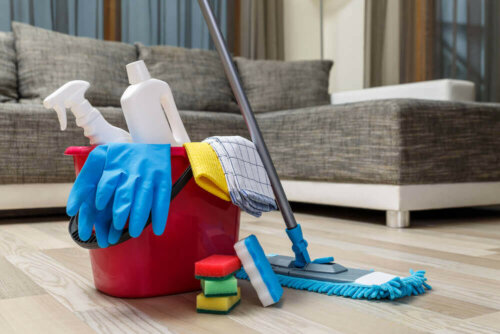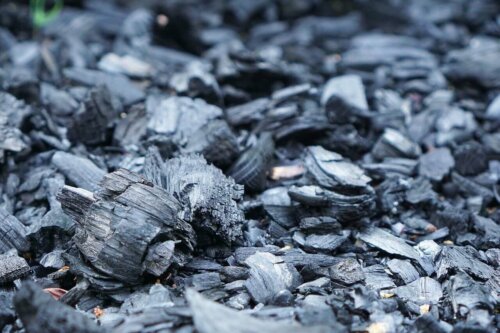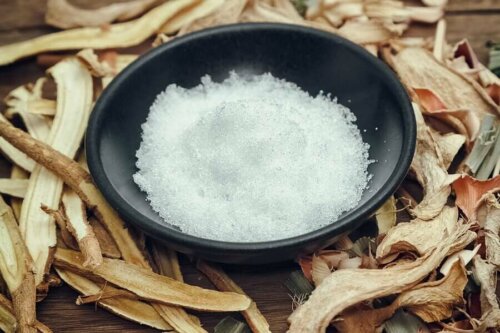Get Rid of Bad Odors in Small Spaces

Do you need to get rid of bad odors? Their origin can come from various places. However, in small spaces, humidity, lack of ventilation, and the proliferation of mold are usually the most common causes.
It’s a simple equation. Bad smells in homes are usually caused by humidity in the environment or stored in indoor objects. Of course, this fosters an environment for bacteria and dust mites. Sometimes, these microorganisms are the worst enemies of people with allergies or asthma.
It’s easy to see, then, how it can affect your health. However, another important reason to tackle bad odors is that it’s simply unpleasant. For your comfort and those of your guests, we’d like to present two magical ingredients.
Get rid of bad odors using these two ingredients

Humidity accumulates and sets into everything it reaches. It can affect your walls and clothing especially dirty clothes, dirty shoes, and curtains.
As such, the first thing you should do to eliminate bad smells in enclosed spaces is to ventilate them and keep them clean. Make air fresheners and floor cleaners your best friends.
Once you’ve done that, you can use two natural items to prevent bad smells from returning.
Learn these Four Cheap Tricks to Naturally Aromatize Your Home
Natural charcoal

You can get natural charcoal in any supermarket. Then, you can use it easily in rooms, refrigerators, closets, or any other space where there’s a bad smell.
One gram of natural charcoal equals 2,691 square feet in terms of absorptive capacity. Fortunately, this applies not only to foul odors but also to other substances that are harmful to your health that you don’t even realize exist. All of this is thanks to this simple natural ingredient.
Natural charcoal comes from an oak called Quercus phillyraeoides. The oak goes through a process of moderate carbonization and mixes with sand, soil, and ash, giving it its whitish tone.
Now, you’re probably wondering what to do with it once the smells disappear. You can easily “renew” charcoal by leaving it in the sun for a few hours. There, it will dry, expel moisture and the absorbed substances, and be ready to be reused.
Read about these Five Surprising Uses for Activated Charcoal
Camphor

Camphor is a substance with a large number of uses, including eliminating odors and preventing many conditions. In addition, it’s also an analgesic and anti-inflammatory agent.
How can you use camphor to eliminate odors in enclosed spaces? Firstly, you can use it in any of its forms. This includes essential oils, liquid, solid, and even as a powder or balls.
One option is to mix it with water and your floor cleaner. Camphor has a great aroma and creates a relaxing atmosphere once you’re done cleaning.
Additionally, you can use it as a spray by adding some to a spray bottle. So, simply combine a little water and any essential oil. Remember, moderation is key. Inhaling large quantities can be harmful to your health. Thus, it’s important to only use a few drops.
Finally, you can also use camphor balls in your closet. Simply place them in your closet and say goodbye to odors caused by humidity and enclosed spaces.
Finally, eliminating bad smells from enclosed spaces won’t be a problem. Furthermore, in a matter of minutes, your household will smell good and coming home will be much more enjoyable.
All cited sources were thoroughly reviewed by our team to ensure their quality, reliability, currency, and validity. The bibliography of this article was considered reliable and of academic or scientific accuracy.
- Rutala, W. (1996). Desinfectantes de uso hospitalario. In Mayhall Hospital Epidemiology and Infection Control. Maryland: G. Baltimore.
- Carrasco, S. (2017). 5 objetos en casa que acumulan millones de bacterias : Su Médico.
- Adams, H. S. (1956). UN PROYECTO DE PROGRAMA DE PROTECCION DE LOS ALIMENTOS PARA LOS PAISES QUE NO LO TIENEN. PSP.
- Analiza Calidad. (2006). Microorganismos indicadores. Microbiología de Los Alimentos.
This text is provided for informational purposes only and does not replace consultation with a professional. If in doubt, consult your specialist.








